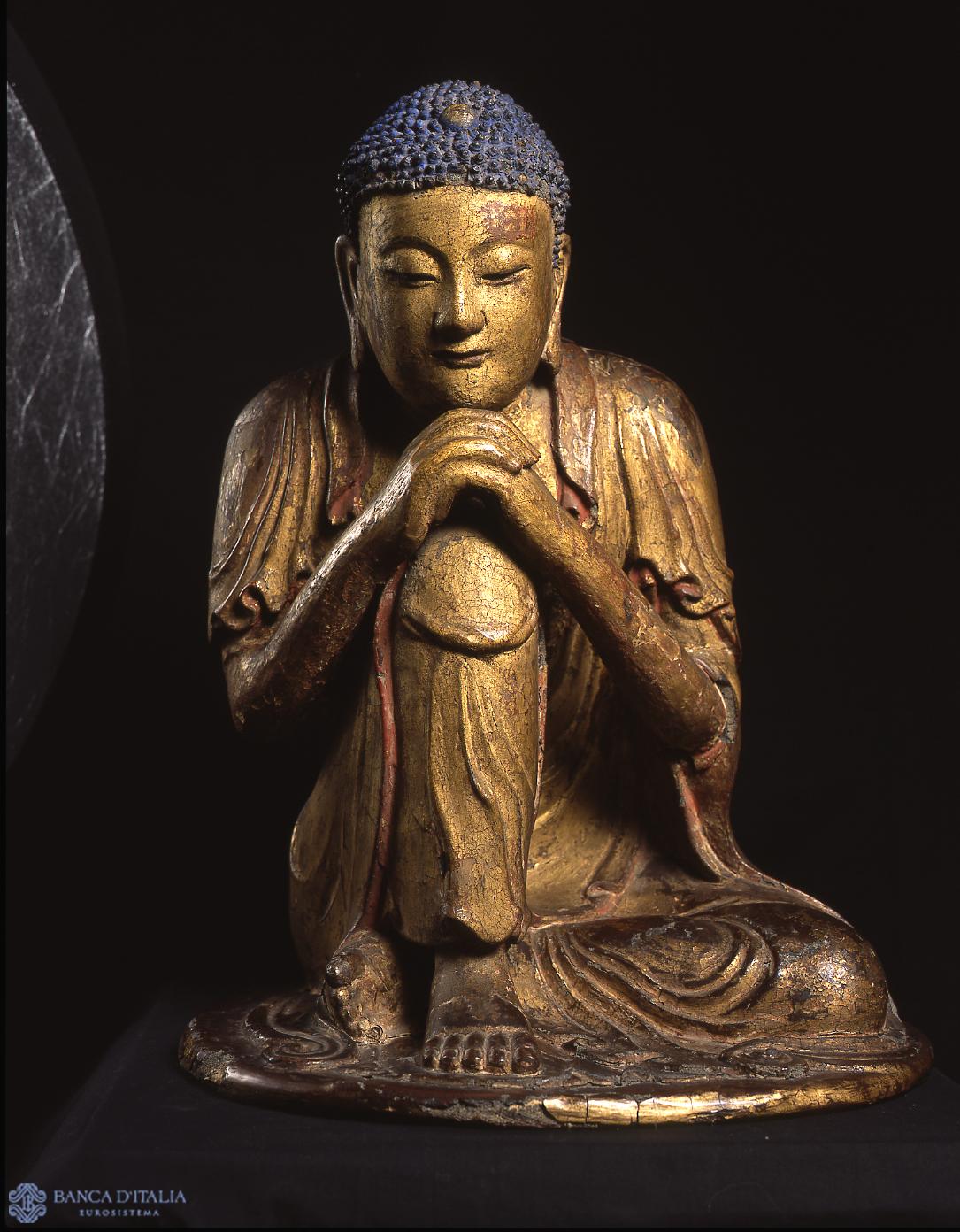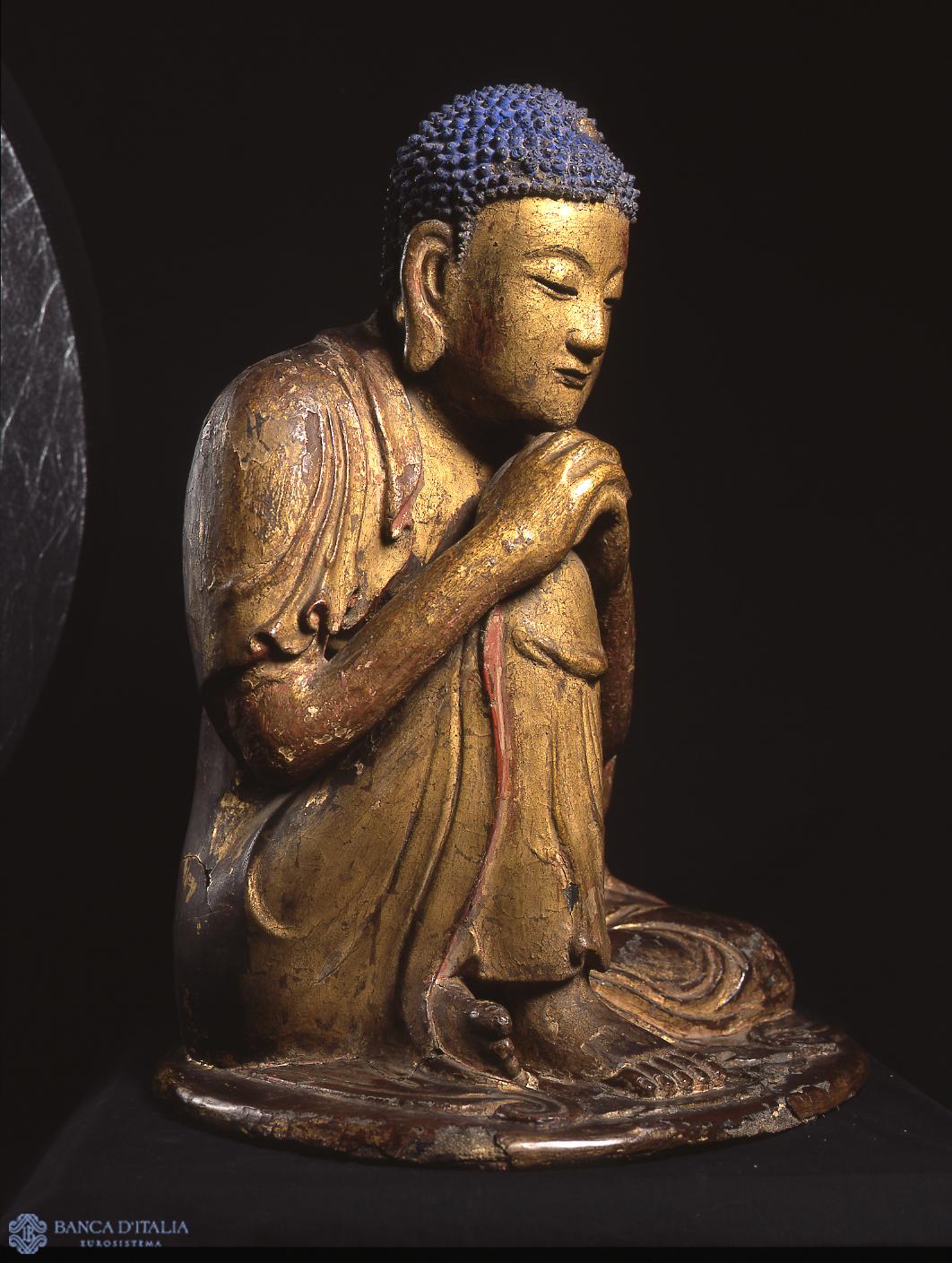The Buddha is seated on the ground, his right leg pulled up and his chin resting on his hands clasped around his knee. He wears a traditional shawl and his tightly curled ‘peppercorn’ hair recalls Indian prototypes; it is painted bright blue, the colour symbolizing the attributes of the Buddha, and in combination with the gold produces a lively ornamental effect. Unusually, the Buddha has a humanized appearance, created by the soft plasticism of the figure and the concentrated and melancholic expression.
This mediating Buddha is a true masterpiece. The crouched position of the god, his softly draped robe clinging to his body and underlining its grace, his slightly forward-bent head and the fine traits of his noble face etched in clean, sparing lines, indicate a highly sophisticated culture. And in fact it has been suggested that the statue is a copy of a Yuan original dating from the Ming period, although a more reliable opinion dates it to the Yuan Dynasty (1279–1368).
The iconography is typical of some statues of the Buddha in ascetic pose dating from this period. Two other examples exist, one in the University Museum of Pennsylvania and the other in the Detroit Institute of Arts; the Bank’s statue has the same the golden robes and flesh as the former and the blue hair of the latter.
The figure conveys the full importance of the emotional aspect, a major innovation of the Yuan Empire that contrasted with the realism of the Song period. Under the Yuan Dynasty, founded by the Mongol ruler, the Tibetan culture of the Lama prompted a resurgence of religious zeal, inspiring a series of statues of the Buddha in meditation.
Buddha Shakyamuni in meditazione
The Buddha Shakyamuni in Meditation
Sculpture
17th century AD
16th century AD
15th century AD
14th century AD
8th century AD
Religious

Date
Dinastia Yuan (1279-1368) o inizi dinastia Ming (1368-1644)
Material and technique
Lacca dorata
Measurements
cm 57 x 43 x 39
Compiler
Augusta Monferini


